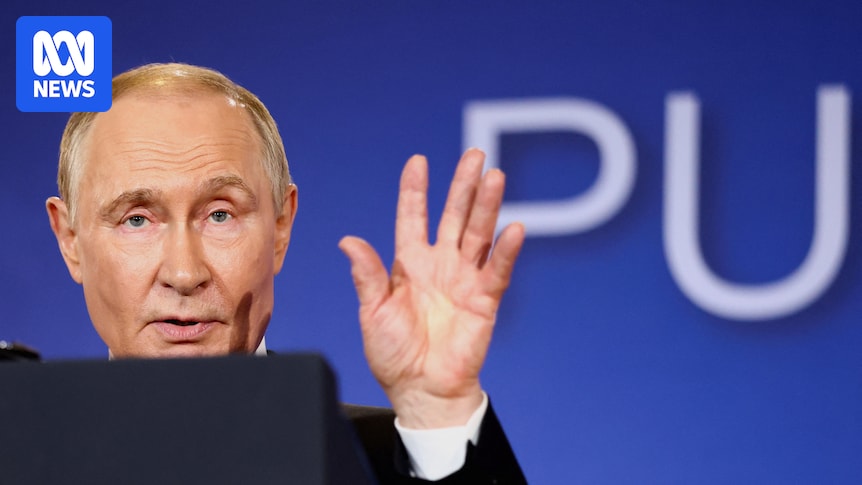
In a recent summit held in Alaska, former U.S. President Donald Trump and Russian President Vladimir Putin met for a 12-minute joint press conference that left the world on edge. The meeting, which many feared could lead to a significant geopolitical shift, ended without a formal agreement, but with Trump seemingly leaning towards Russia’s side in the ongoing conflict in Ukraine.
The summit, which took place amid heightened tensions, saw Putin reportedly offering Ukrainian President Volodymyr Zelenskyy a deal that would allow Russia to annex the Donbass region. This proposition, leaked to the press, has been met with skepticism given Putin’s history of breaking such promises.
The Alaska Summit: Key Takeaways
During the five-hour meeting in Alaska, Trump and Putin discussed various issues, but the focus remained on the conflict in Ukraine. A photo captured Trump looking despondent as he boarded Air Force One, signaling the summit’s lackluster outcome for the U.S.
According to reports, Trump has communicated to European leaders his support for a plan that would end the war in Ukraine by ceding unconquered territory to Russia. This stance places Zelenskyy in a difficult position, as it contradicts his steadfast refusal to compromise Ukraine’s territorial integrity.
Zelenskyy’s Diplomatic Dilemma
Ukrainian President Volodymyr Zelenskyy is scheduled to visit Washington, D.C., next week to discuss the ongoing conflict. Despite being on theoretically friendly territory, Zelenskyy faces significant pressure, as his last visit in February was marked by a public confrontation with Trump and Vice-President JD Vance.
During that visit, Trump labeled Zelenskyy a “dictator,” further straining the relationship. Now, Zelenskyy must navigate the complex dynamics of U.S. politics while maintaining Ukraine’s sovereignty and seeking a just end to the war.
“A Ukraine that will be so battered that it will be very hard for Ukraine to, for example, create a military deterrent going forward against future waves of Russian aggression.” — Andrew Weiss, Carnegie Endowment for International Peace
Putin’s Strategic Calculations
Russian President Vladimir Putin’s actions suggest a long-term strategy aimed at weakening Ukraine and its Western allies. According to Andrew Weiss, a Russia expert at the Carnegie Endowment for International Peace, Putin’s goal is to create a situation where the cost of supporting Ukraine becomes prohibitive for Western countries.
This tactic places the United States and its allies in a challenging position, as they must balance the need to support Ukraine with the geopolitical realities of engaging with Russia.
“There’s only one thing Russia respects and that is leverage. They don’t do things to be nice.” — Andrew Weiss
Global Implications and Future Prospects
The Alaska summit underscores a broader trend of countries making decisions based on their interests, sometimes independent of U.S. influence. This shift complicates diplomatic efforts, as any peace agreement must address not only the immediate conflict but also the underlying geopolitical tensions.
Trump’s actions at the summit, including his apparent willingness to ease sanctions on Russia, have raised questions about the effectiveness of U.S. foreign policy. While some may view these moves as strategic, others see them as concessions that embolden Putin.
As the world watches, the question remains: Can a lasting peace be achieved with a leader like Putin, whose commitment to agreements is often in doubt? The coming weeks will be crucial in determining the direction of U.S.-Russia relations and the future of Ukraine.







